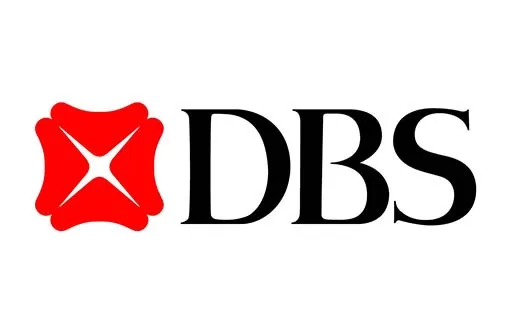Partnership is essential for any institution seeking to capture the opportunities in Asia’s dynamic markets, especially in today’s rapidly evolving business landscape. Regional partners bring local knowledge, experience as well as access to new markets and customers.
The need for partnership can be seen through both a global and regional context. No bank or financial institution has a fully comprehensive global suite of services and a local or regional partner can support areas of non-core strength. No matter the geopolitical noise, the world remains highly connected and customers expect to be served seamlessly across markets.
Supply chains may shift but the need for global trade, and the banking services that accompany it, is as crucial as ever.
At a regional context, it is essential to recognise that Asia is not a homogenous market. Apart from difference in culture and languages, each jurisdiction has its own regulations, licensing requirements and currency regimes, often differing widely.
Asia is characterised by urbanisation and a high adoption rate of technology. It has 1.4 billion mobile internet users in 2023, and this is expected to grow to 1.8 billion by 20301. The rapid pace of digital adoption and disruption creates pressure on financial institutions to keep pace with customer expectations.
Asia is also increasingly driven by ESG considerations and the need for sustainable finance.
All these factors demand partnership. Individual institutions can’t be abreast of all the evolving regulatory, demographic and cultural changes across Asia; partners with a presence on the ground can help with compliance by sharing expertise and resources, as well as connectivity and insights into local consumer behaviour.
Fintech partnership – Turning digital disruption into opportunities
Without question, digital disruption has accelerated the partnership theme. While there are areas where banks and fintechs are in direct competition, there also exist numerous areas where banks and fintechs can strategically leverage each others’ respective strengths and establish partnerships to enhance their products and services to enrich experiences for their customers.
The nature of these partnerships can take a variety of forms. One is to partner with fintechs to reach underserved markets, allowing banks to extend their reach to previously neglected segments such as micro SMEs and bringing more parts of society the benefits of financial inclusion. Another is to support fintechs in their business, providing banking services, including access to payments infrastructure, capital markets and funding.
Banks can also invest directly in fintechs or build them directly, as DBS has done: a founding member of the Partior open industry blockchain initiative2, for example, and building the DBS Digital Exchange3 and DBS Globesend4 payment fintech from ground-up within the bank.
Public partnerships and supporting the community
At DBS, partnership with the public sector is especially important. From DBS’ origins as the Development Bank of Singapore, it has been a part of the bank’s DNA to support public initiatives, guided by a strong sense of purpose. DBS demonstrated its commitment to being a vehicle for public good in various ways: distributing relief payments for Singapore during the Covid-19 pandemic, for example, and disbursing government grants for Enterprise Singapore5 leveraging the bank’s blockchain excellence.
Two other examples in the region illustrate the theme. DBS partnered with the Indonesian Investment Authority (INA6) to support the development of Indonesia’s infrastructure sector, including the provision of financial advice, investment banking expertise and advisory services. This, in turn, supports the economic growth and development of Indonesia.
Another is a USD500 million facility launched in partnership with the International Finance Corporation (IFC7), which aims to provide financing to businesses in developing countries, fostering economic growth and supporting trade flows.
By engaging governments and building trust in both the public and private sector, DBS supports growth and development in the region. This is particularly crucial in the development of a sustainability agenda, bringing public and private actors together to address an existential challenge in a coordinated manner. The threat of climate change cannot be mitigated without partnership.
An ideal partner
DBS is uniquely positioned as a partner for financial institutions. Firstly, it offers regional expertise and an extensive network across the three key Asian axes of growth: Greater China, Southeast Asia and South Asia. Partners can leverage DBS’ local knowledge and relationships to navigate the complexities and risks of Asia.
Its home base, Singapore, made its name as a gateway for global investors to access opportunities in Asia. But DBS is entrenched far beyond its home: with a presence in 19 markets across Asia and beyond. DBS is now a top three foreign bank in RMB clearing and has a full suite of onshore transaction banking and markets capabilities, offering connectivity for financial institutions to China; its extensive presence in India now boosted by its Gift City banking unit; and it provides a pan-Asian correspondent banking service. DBS brings connectivity within Asia – and to the rest of the world.
DBS is an acknowledged leader8 in digital banking and has invested heavily in technology and innovation including APIs, tokenisation and blockchain. Underpinning these differentiators is DBS’ financial strength and stability, with high credit ratings9 and a reputation built on trust. DBS is a safe and trusted counterparty amid market volatility.
At the heart of DBS is its commitment to strengthening relationships. It is a customer-centric bank with a deep understanding of Asia and track record of safety. These attributes make it an ideal partner to financial institutions in the private and public sector – at exactly the time that partnership is more important than ever.

